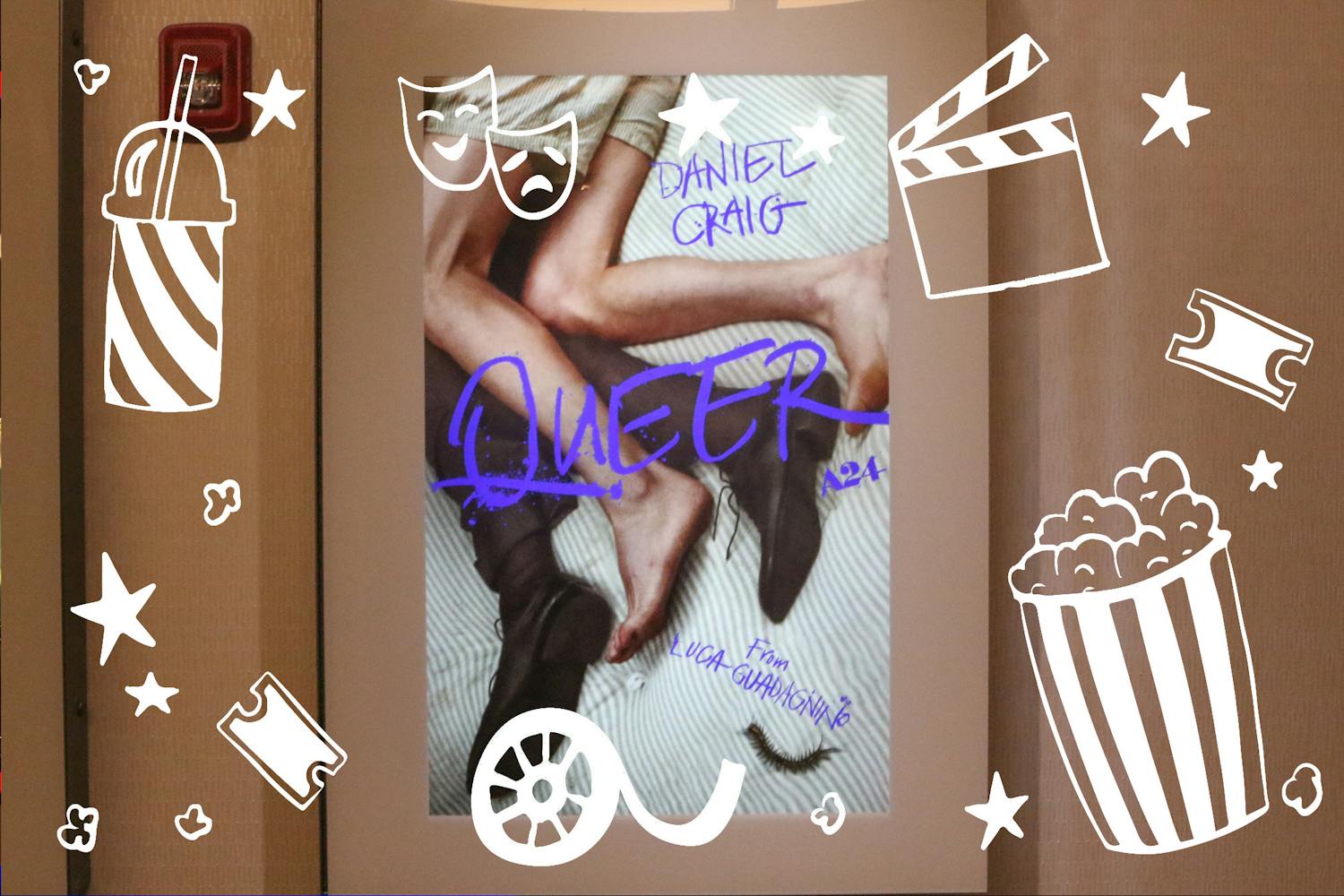Artists, students, families and friends came out for a night of art and performances that depicted the injustices and struggles that the Latino community faces in light of immigration reform.
In the courtyard, goers caught a rap performance by local hip-hop duo, Shining Soul, followed with a spoken word performance accompanied by dance and song featuring Kate Saunders, Liliana Gomez and Michelle Ivette Ponce.
Both performances highlighted the emotions that families and individuals experience when faced with oppression, racism and the risk of deportation.
Alex Soto and Franco Habre of Shining Soul rapped about the problems behind Senate Bill 1070, Arizona's controversial immigration legislation.
Saunders, Gomez and Ponce told the story of a girl whose mother faced deportation and time in jail.
To each of these artists, the issues being addressed hit close to home.
Saunders, a host of the show, said although she grew up in the “whitest white family,” she became immersed in the Mexican culture through the friends she made.
“I really wanted to learn Spanish, and then I went to Mexico, and just through meeting all these diverse people, I became a part of the culture,” Saunders said.
Soto, a member of the Tohono O’odham Nation, said he experienced the effects of immigration control after check-points began to litter the streets of his hometown. After being entirely under Mexican rule, The Tohono O’odham Nation was eventually divided between Arizona and Mexico.
“Our community is separated by the 79 miles of the border, and regardless of what's going to happen with the politics and so on, it’s going to militarize where I’m from, which is a place already militarized," Soto said. "As far as all this sexiness in the media regarding border militarization, it’s been happening here in Arizona. It’s already happening."
Habre, a border activist along with Soto, added his view.
“And in the face of militarization, we need a militant response, and that’s what we put in our music,” Habre said.
Ponce, who sang during the multifaceted spoken word performance, came to Phoenix from New York and soon became tight-knit with the city’s Mexican community.
Born in Puerto Rico and raised in Manhattan, Ponce says Phoenix feels like home.
“I’m fairly new, but I’ve seen it grow a lot, especially in downtown and with all the situations that happened in the past year,” Ponce said.
Ponce said she can now identify with the Mexican culture after living in Phoenix and experiencing a culture that is very “intense.”
“It was weird at first, because I was another Latina, and everyone assumed I was Mexican," Ponce said. "But then I just integrated into it and loved it, because I had no choice. They were the only Latino people that were around.”
La Muñeca, or Katie Beltran, has been doing street art in Phoenix for almost two years and aims to motivate action through her murals, paintings and wheatpaste work.
“We don’t want to just see advertisements all day long," Beltran said. "We don’t want to be bombarded by images trying to sell us stuff. Street art is important, because it’s all about the people and showing what we really care about.”
Beltran and Saunders met Yescka on a trip they took this summer to Mexico.
“(We) did some street art there together, and we thought it’d be really cool to bring that back to Phoenix," Beltran said. "We think street art is a really important platform for talking about social issues.”
Yescka, whose mediums are graffiti, paint, woodcut and stencil also aims to expose social and political wrong-doings through his work. However, the artist hasn’t always done street art for a cause, per se. Before 2006 Yescka was most involved in graffiti.
“I was doing that for me, just putting my name in the streets," Yeska said. "Putting your mark in the street is cool, but also on the other hand, it can be very egotistical.”
He explained how his mind changed about painting for only himself. After a protest in Oaxaca in 2006, Yescka said he realized then that he wanted to paint for the people.
“I thought, ‘I want to do street art, but I want to do something for my people too,’ so it was painting the walls around the city, against the government, against violence," Yeska said. “I learned that art is power.”
Because of the nature of a pop-up show, the installation was only up for one night.
In Spanish, Yeska described that because the artists had very little time to put this particular show together, he wishes to put on a larger show in the future that will allow more time.
The show was held at The Hive, a gallery on 16th Street located in a district lined with Mexican restaurants and known to the Latino community as "Calle 16."
With a "Calle 16" organization that supports mural work and art as a way to revitalize the area, and support from advocacy groups and the community, Saunders said she and the artists were able to pull together the pop-up show in about a month and a half.
Reach the reporter at tnguy39@asu.edu or follow her on Twitter @teenyanguyen



